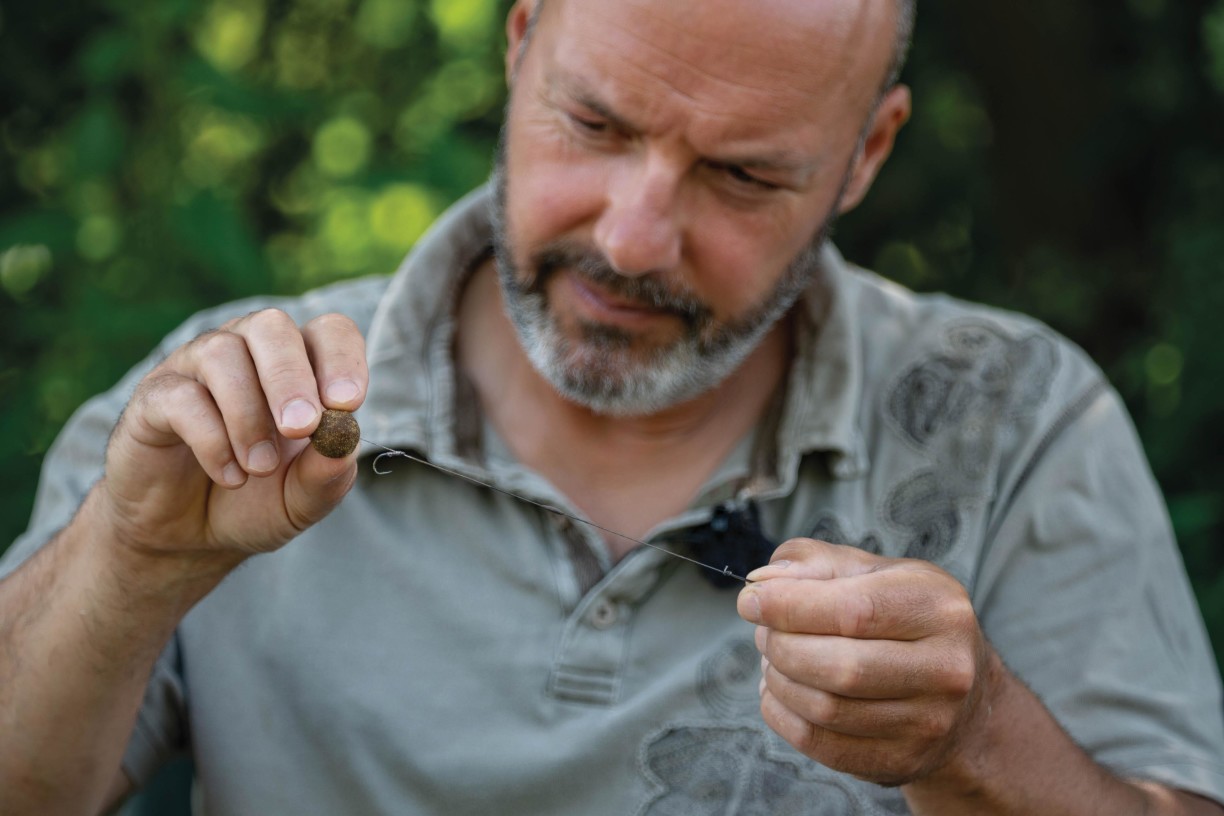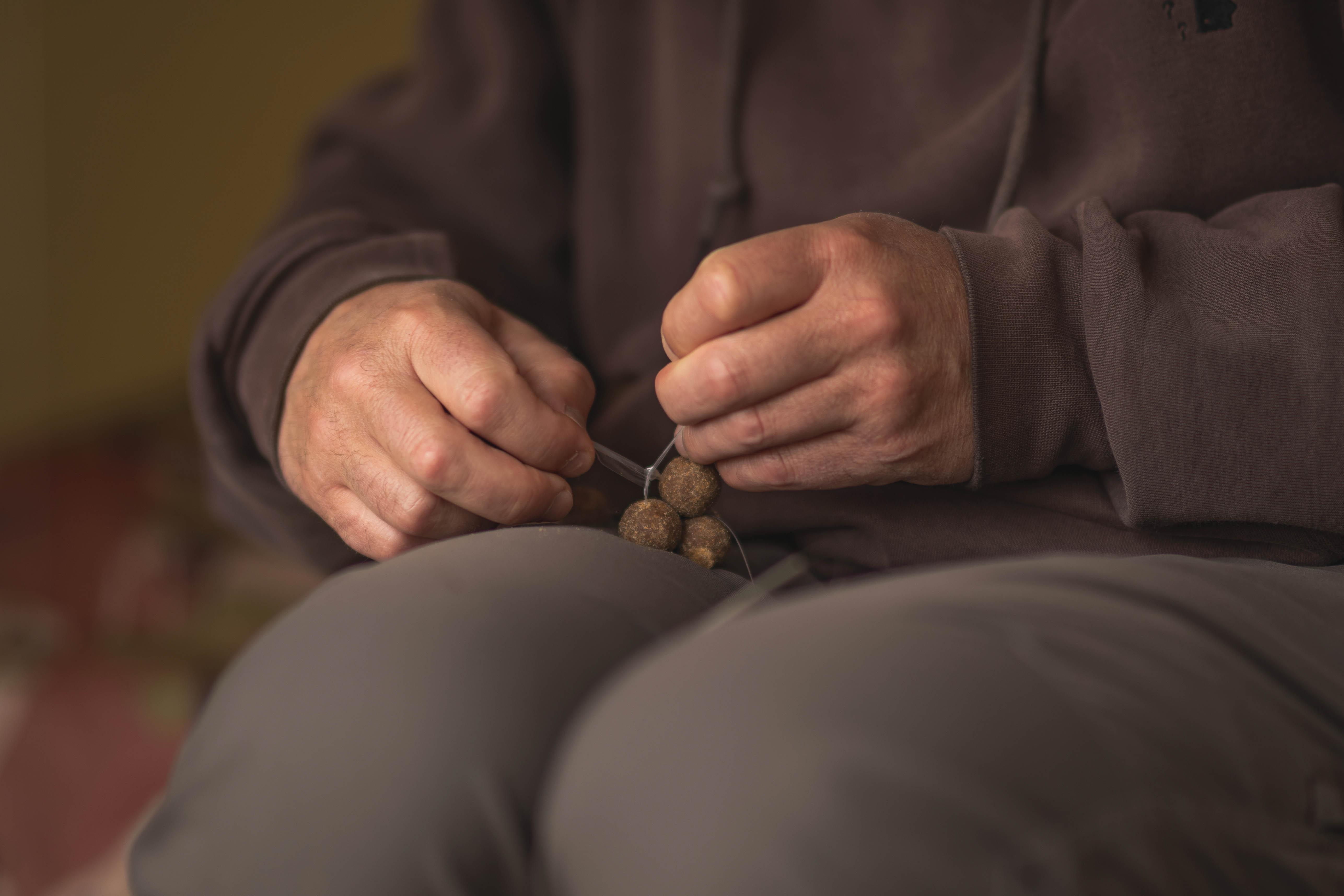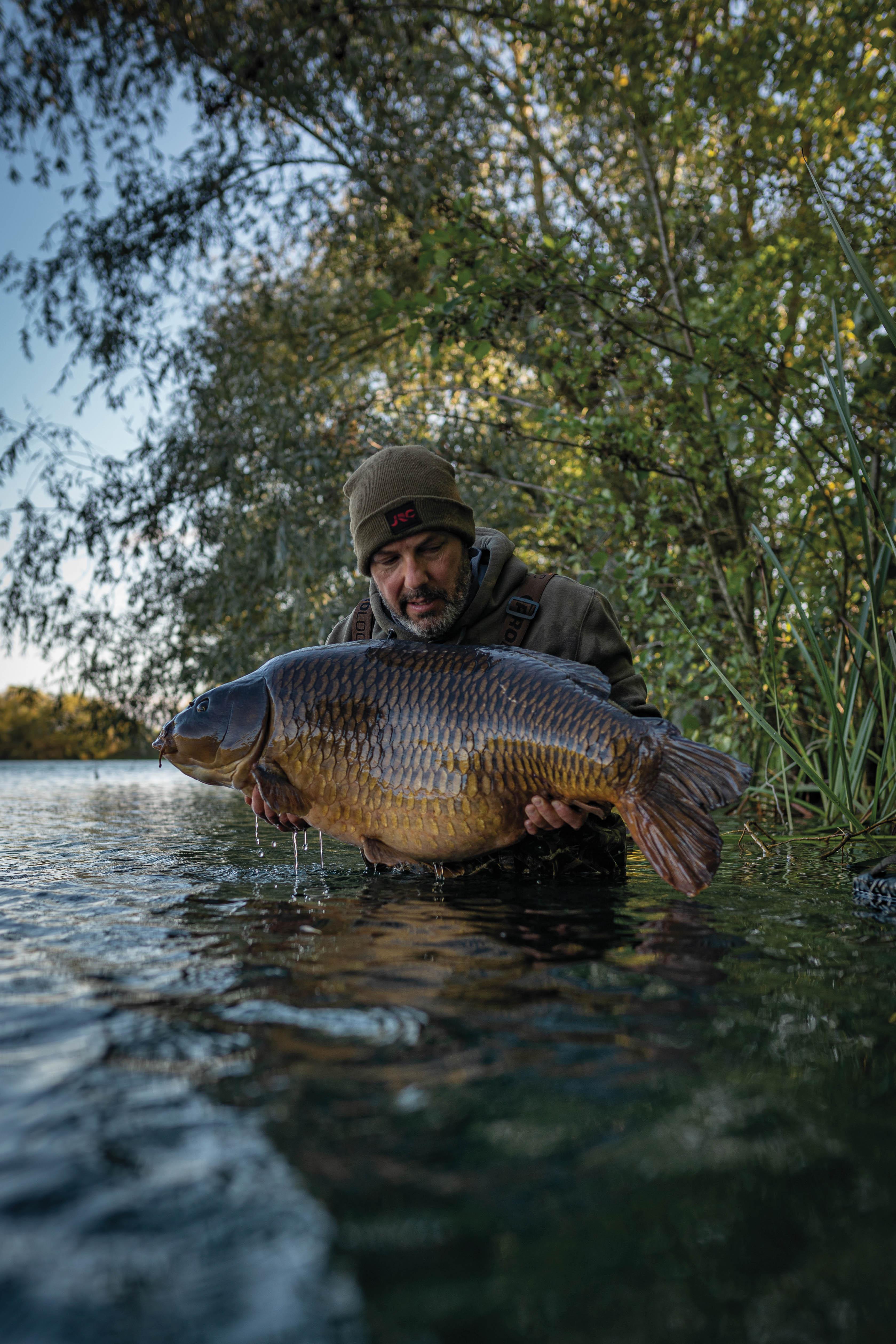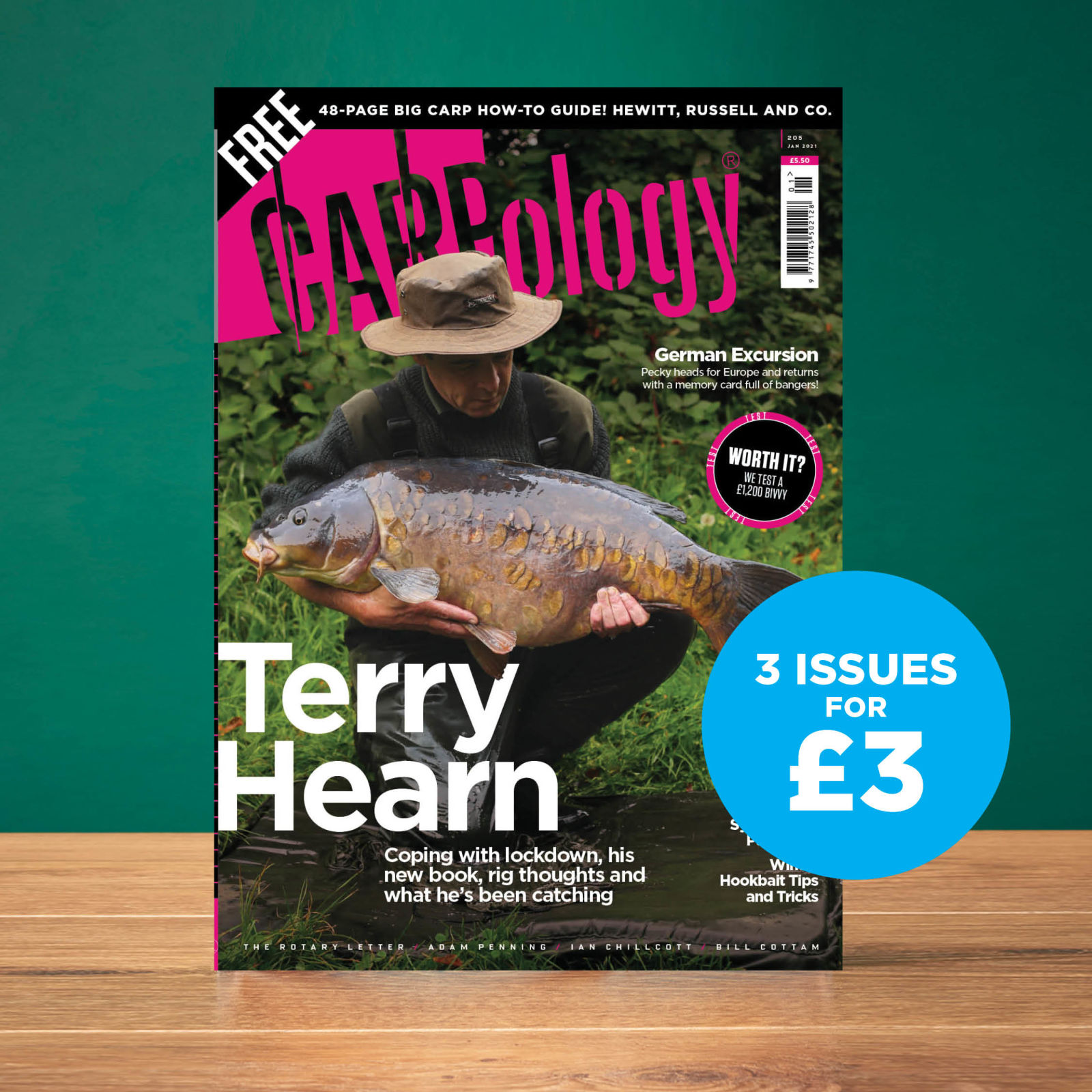End Tackle According To... Adam Penning
While the fundamentals have remained the same, it now appears as though less is more for Adam when it comes to rigs…

The game-changing rig moment which altered everything for me was the Stiff Hinge. Rob Maylin kindly explained it to me over the phone around ’96, but I didn’t really grasp it until Terry [Hearn] showed me. At the time it was just so different to anything out there, and of course it was just about as anti-tangle as you could make a rig, which in itself was a huge part of the effectiveness. Being on that well before it became mainstream was an undoubted edge. It also led to my thinking on rigs being based primarily around the stiff hook section—that extension is the key and it has been a fundamental part of almost all my rigs—bottom or pop-up, ever since.
The last rig-related item I bought and loved was ESP Raptor T6 hooks. I principally tend to use just two hook patterns for almost all my carp fishing, and the T6 was the first hook I ever brought to market, in 1999, and it’s still as good today as it ever was! So it hasn’t got the fashionable teflon coating—so what! They are incredibly strong, sharpen like a dream and are ultra reliable. I’ve used them down to an 8 (which really is a small looking hook) for mid-forties, but most of the time I use a size 5.
Why are they so reliable? The secret is in the beaked point combined with the subtle offset. Fashion (palm tests) has dictated that anglers don’t want an offset in their hooks but the key thing they are missing is that it is this which helps to create such an incredibly reliable hook hold. If you look at the shape carefully, it is the beginning of a corkscrew spiral—they twist in and don’t tend to slip. I buy them wherever I see them but sadly they are becoming rarer and rarer. Only last week I caught my biggest UK carp on a T6, and when I think back to the design stages all those years ago, it is something that I’m really proud to have been part of.
On my wishlist for a future end tackle item is a non-misting JAG Eyeglass! That really does start to manifest itself at this time of year and can be a real pain. It’s such a simple thing but it is absolutely imperative to have a perfectly clear view of the finer details of a hook point.
Terry Hearn, in my early days, influenced me a lot when it came to rigs. There were always things going on with rigs! I remember one that he showed me where the Hair was tied from a soft braid and whipped onto the hook, just under the barb. It had the effect of making the point very heavy indeed and worked really well. The only problem was that for a big cast, the whipping had to be superglued and that created an issue with full hook point penetration. About 20 years ago I began substituting the whipping for a big piece of silicone to trap the Hair, and combined that with a big lump of putty below the hook. That was a real game-changer!
These days, I take bits and pieces from here and there. I loved Joe Morgan’s ‘Hairless’ thing and have used that a bit. Joe is very ‘riggy’ and catches so many fish that I’m very lucky to be able to bounce stuff off him. We have similar views on rigs and both tend to prefer super short and dangerously sharp!
Chemo’s [Ian Russell] preference for a boom that is soft and lies in a heap has real validity, particularly in the current scene. In fact, reaching the realisation that a carp does not have to tighten the rig to the lead in order for it to become hooked/pricked is a real game-changer in itself…
I have an excessive collection of hooks and always have done. So one big pouch on my holdall is always taken up with different patterns and factory samples. As I said earlier, I mostly just use one or two patterns, but I still carry them around. I also have too many spools of different hooklink materials.

I think we have gone about as far as we can now with rigs. In fact, I worry a bit that any further development could be borderline unethical. If we made it so conclusively in our favour that any carp that dared to pick up a boilie was instantly hooked, I think the effects could be quite detrimental. Remember the Beachcaster Rig that people used for surface fishing? It was so devastatingly effective that it stopped working simply because the fish couldn’t see any danger, couldn’t work out why they were getting caught and so simply stopped surface feeding. We don’t want to get to that stage on the bottom!
One small tweak I made to a rig which had a massive outcome was adding a big lump of putty just above the hook on a bottom-bait rig. With carp fishing there will always be parallel and prior development so I certainly wouldn’t dare claim it as mine, but I would say that I was the first to put it into print. At the time (early 2000s) I was thinking about trying to hook fish independently of the lead when stalking at the Blue Pool. As soon as I tried it in the edge, it cut bite time from perhaps forty minutes to half that—it was just much, much more effective. I then used it there in open water during a session with Simon Scott and caught over 30 fish in a single day; it was a real leveller, and still is.
Another tweak was going super short. I’ve caught numbers of fish on links as short as 1.5-inches and like Joe [Morgan], generally subscribe that, all things being equal, a really short link will cause them much more of a problem than a really long one.
Hand sharpening hooks, on certain waters and in the right situation, it is a huge edge. Only a foolish man would argue that something less sharp is more effective when it comes to carp that are not inclined to bolt. The end objective is to penetrate soft flesh—it is foolhardy to argue that something ‘blunter’ will be better or even as good as something ‘sharper’. We all know that not all fish bolt and these are the ones we are discussing because the size of the lead or the tightness of the line doesn’t even come into play. Hook sharpening will cause those fish (the ‘sitters’ as I call them) a lot of problems; I’m not concerned about the ‘bolters’ because they will indeed hook themselves against a packet sharp hook as they surge off in panic. The question is: do you just want to catch those or do you want to maximise your percentages and catch the really shy, slow moving ones too?
All my angling life I have been obsessed with really short links. In fact, when Terry posted me a Stiff Hinge the first thing I asked him was why the boom was so long (about 10-12”). The length didn’t bother him at all (clearly!) but I became focused on using the rig with a much shorter boom of around 6”. Was it better? Possibly for the size of fish I was angling for, but I’m now sure that in those early days with the fish having had little exposure to it, longer was the better option.
For the last year, my links have got longer and longer which really is complete anathema to me! Currently I am using about 18” long links and doing really nicely which is a massive about turn; I’d have previously considered rigs like that to be Zigs!

When it comes to hooklink materials, I favour a soft coated braid. I’ve tried pure braid but got the occasional tangle which is clearly unacceptable, so I switched to a coated option and it’s been working perfectly. I do still like the really short stiff rigs too, I just haven’t used them much in the last year.
When it comes to mounting my hookbait, I like to just thread it onto a Hair! My whole approach has gone full circle and my rigs are really stripped down. In fact, I only use two components: a hook and a hooklink with a small loop in the end. You literally could not make a rig from any fewer items, and in this world of endless terminal clutter, I think it has real viability.
When it comes to hookbait choice, if I am boilie fishing then it’s a toughened, matching bottom-bait. No glugs, no bright topper, no plastic corn added, no ‘waftiness’—nothing! And guess what, it’s working obscenely well. If I am fishing over a mix then I really do like a single tiger as the hookbait—absolutely supreme.
I see end tackle products getting more and more expensive! And featuring more and more unnecessary items that are designed to catch the angler rather than the carp.






